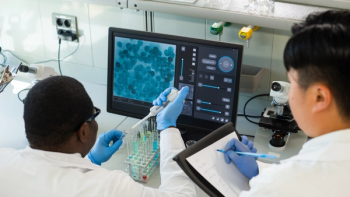
- Pharmaceutical Executive-10-01-2011
- Volume 0
- Issue 0
Henry Grabowski: Academia Sweet Spot
Henry Grabowski, PhD, Professor of Economics, Duke University
Adistinguishing feature of the best academic research is how well it relates theory to practice: Does it shape our collective perception of behavior in the real world of commerce? No other sector can make a better case for that "real world" impact than pharmaceuticals, and if one were asked, "Who is the academic economist who has contributed most to understanding this industry?" I believe the answer would be obvious: Professor Henry Grabowski of Duke University. Grabowski's scholarly contributions have had enormous impact outside the academy, on public policy, as well as industry decision making. Much legislation affecting pharmaceuticals, vaccines, and biotechnology products has been enacted based on his insights.
Henry Grabowski
Since receiving his PhD in economics from Princeton University in 1967, Grabowski, along with numerous collaborators, has made wide-ranging contributions in the economics of R&D and innovation and regulatory policy. Although best known for his work in the biopharmaceutical sector, he has also published in other areas, such as cost-effectiveness analyses, auto insurance and safety regulation, and the life cycle and managerial models of the firm.
Over the years he has made numerous other professional contributions—testifying before Congress, presenting at innumerable public policy forums, serving on the American Enterprise Institute Health Advisory Board, providing leadership on journal editorial boards, and rendering consulting services (often pro bono) to the National Academy of Sciences, the Institutes of Medicine, the Federal Trade Commission, and the General Accounting Office, to name just a few.
Grabowski's research on pharmaceuticals evolved gradually after he arrived at Duke University in 1972. First was the award of an NSF grant to study the effects of the 1962 Amendments to the Food and Drug Act on drug innovation incentives. This was followed by an NSF grant to study market competition in pharmaceuticals more broadly, including the role of patents, generic competition, and government regulatory and reimbursement policies. In the early 1980s Professors Grabowski and John Vernon also decided to establish the program in Pharmaceuticals and Health Economics at Duke at a time when few other economists were studying the industry on a consistent basis.
Several important articles by Grabowski and Vernon on the impact of the 1984 Hatch-Waxman Act appeared in the mid '80s, followed by a simulation model of the R&D process in pharmaceuticals and an analysis of Medicaid patients' access to new drug approvals. But it was in the 1990s that he coauthored five articles that are legitimately characterized as "grand slams"—articles that continued his collaboration with Vernon, and initiated new collaborations with Joseph A. DiMasi, Ronald W. Hansen, and Louis C. Lasagna. Three of these now-classic articles quantified the risks, returns, and costs of innovation in the pharmaceutical industry, while two quantified the impact of the Hatch-Waxman legislation on brand loyalty and generic entry and pricing.
The '90s also marked publication of one of the first papers to analyze drug formularies, coauthored with Grabowski's former student, C. Daniel Mullins, along with Grabowski's first article profiling the nascent biotechnology industry. More recent collaborations include an oft-cited 2008 study on the need for data exclusivity for developers of large-molecule biologics.
Two additional studies are particularly notable for the role they played in Congressional legislation. Grabowski's 2006 Health Affairs paper, coauthored with David Ridley and Jeff Moe, developed the concept of priority review vouchers to incentivize the introduction of new drugs for neglected diseases in poor countries. The ideas in this article were enacted into law through an Amendment to the Act Renewing Drug User fees, sponsored by Senators Brownback, Brown, and Lieberman. This past year, Congress created an abbreviated regulatory pathway for the approval of biosimilars as part of the Patient Protection and Affordable Care Act. This law also incorporated a data exclusivity period for new biological entities to maintain the incentive for innovation that was consistent with Grabowski's analysis.
Finally, among the 26 peer-reviewed journal articles published by Grabowski and collaborators between 2000 and 2009, another one deserves particular mention. Here is a quiz question: Which article is the most cited article ever published in the main line Journal of Health Economics? Answer: "The Price of Innovation: New Estimates of Drug Development Costs," Grabowski's work in collaboration with Joseph DiMasi of the Tufts Center for the Study of Drug Development. This article has been cited 726 times. – By Ernst R. Berndt, Massachusetts Institute of Technology, Alfred P. Sloan, School of Management, and the National Bureau of Economic Research
Articles in this issue
about 14 years ago
Pharmaceutical Executive Digital Edition - October 2011about 14 years ago
Y. K Hamied : Changing the Dialogueabout 14 years ago
Fred Frank: Fortune and the Financierabout 14 years ago
Marck McLellan: An 'A' for Advancing Expectationsabout 14 years ago
Inside the Mind of the CEO: Steve Collisabout 14 years ago
Atsushi Nagahisa: Creating Customer Valueabout 14 years ago
Physicians: Still the Vital Connection in Medicineabout 14 years ago
Henry Waxman: "Representing" Healthcare to the Fullestabout 14 years ago
IP: Securing a Global Consensus—Can Industry Do It Again?about 14 years ago
In Establishing the Evidence Base, He Made Science CountNewsletter
Lead with insight with the Pharmaceutical Executive newsletter, featuring strategic analysis, leadership trends, and market intelligence for biopharma decision-makers.





